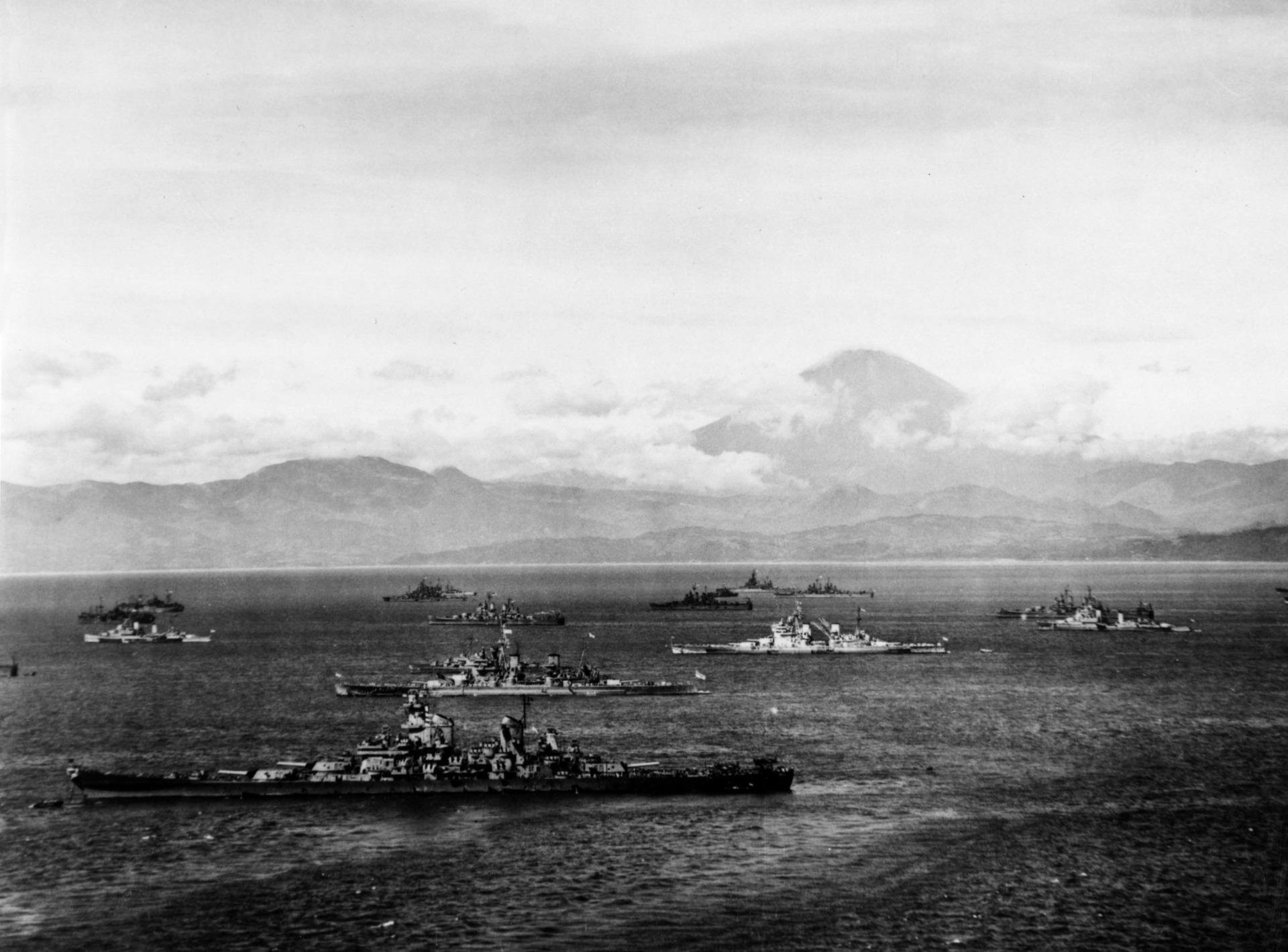When Japan surrendered 70 years ago this month, the United States stood supreme in the Pacific. Only the Royal Navy and Royal Australian Navy had surface combatants that could roam freely from the Indian Ocean to the East China Sea and these remained a fraction of the massive “Big Blue Fleet” the U.S. Navy had deployed. With the exception of Taiwan, parts of the Dutch East Indies, the Japanese archipelago and a smattering of isolated South Pacific atolls, the entire offshore island chain in the Western Pacific was under the control of the United States and its allies.
Areas under Allied and Japanese Control. August 15, 1945.
Continental Asia was another matter. U.S. and Commonwealth forces had advanced across Burma, but Manchuria and the northern part of the Korean peninsula were under the control of Soviet forces. The U.S. government would rush battle-hardened veterans from Okinawa to occupy the southern part of the Korean peninsula and leave the vast expanse from Mandalay to Hanoi under Lord Louis Mountbatten’s South East Asia Command (SEAC– which American officers derided as the “Save England’s Asian Colonies” command). In the next two decades this weak purchase on the mainland would cost over 100,000 American lives in Korea and Vietnam as policymakers debated how far to invest in the security of Continental Asia.
Allied battleships in Sagami Bay. August 28, 1945.
With respect to maritime Asia, however, there was little debate. As Chief of Naval Operations Ernest King told the press on July 24, 1943:
…after this war, whether we are criticized for imperialism or not, we have got to take and run the Mandated Islands, and perhaps even the Solomons. We have got to dominate the Pacific.[1]
King spoke for the entire naval establishment and the majority of President Franklin Delano Roosevelt’s senior advisors. After fighting a bloody island hopping campaign across the Central and Southwest Pacific, there was broad consensus that America’s post-war defense line had to lie on the offshore island chains and not Hawaii or the West Coast. As early as 1943, Navy Secretary Frank Knox ordered a review of which air and naval bases the United States would need in the Western Pacific after the war. The U.S. Army Air Force, which had used offshore islands to such devastating effect against Japan, also came to appreciate that opponents with strong air forces did not necessarily need a large navy to threaten U.S. interests in the Pacific if they had access to air bases on the islands. Roosevelt’s closest advisor, Harry Hopkins, had confided to General Joe Stilwell that after the war the United States must have strong bases in Formosa, the Philippines, “and anywhere we damn please.”[2] The President’s liaison to the Chiefs of staff, Admiral William Leahy, told the President that it was critical for the United States to hold all the islands taken in the Pacific as permanent bases and not to turn them over to the UN.[3] And in July 1945 Knox’s successor, James Forrestal explained in testimony before a joint session of the Senate and House Committees on Naval Affairs in July 1945, the United States had to seek naval superiority in pivotal areas, including “the waters contiguous to Japan and to the Philippines.”[4]
Roosevelt was an avid student of Alfred Thayer Mahan and a former Assistant Secretary of the Navy and understood the inherent importance of the offshore island chain to the security of the Pacific and the United States itself. But FDR was also an anti-imperialist and a fervent believer in a new collective security order centered on the “Four Policemen” of Britain, China, Russia and the United States. He mused throughout the war that the offshore island chain could host bombers to keep an eye on Japan and maintain stability after the fighting stopped. The offshore islands were critical, he concurred, but within the context of collective security. To the dismay of key advisors, Roosevelt turned the Kuriles over to Stalin at Yalta and agreed to put the former German colonies in the South Pacific under UN Trusteeship as a way to prod the French and British to do the same with their former colonies. JCS planners, who had studied taking the Kuriles to bomb Japan, warned that the islands were “the obvious springboard of the most possible route of attack on us” by Soviet forces after the war, but they could not sway President Harry S. Truman from fulfilling Roosevelt’s plans in the final allied summit at Potsdam on 18 July 1945.[5]
Over the next five years, the Navy lost political momentum in the rush to demobilize after the war. By 1950 the Big Blue Fleet was reduced to a small fraction of its former strength, with only one carrier, two destroyer divisions, three submarines, and a pair of auxiliary ships.[6] Secretary of State Dean Acheson famously excluded Korea from the American defense line in his January 1950 National Press Club speech. That June, the North attacked the South. Truman’s first reaction on hearing the news, was to ask about the threat to Japan and the offshore island chain. The vision of offshore island control advanced by King, Knox, Forrestal, Hopkins and Leahy now became the centerpiece of U.S. strategy in the Pacific. And though rarely stated as such, remains the centerpiece today.
[1] Stoler, Allies and Adversaries, 144.
[2] John Paton Davies, China Hand: An Autobiography, (Philadelphia: University of Pennsylvania Press, 2012), 151.
[3] Leahy, I Was There, 314.
[4] Forrestal testimony quoted in Davis, FDR, 159-160.
[5] “U.S. Position with Regard to General Soviet Intentions for Expansion,” July 6, 1945, file ABC 092 USSR (15 Nov 44), RG 165, NA, quoted in Marc Gallicchio, “The Kuriles Controversy: U.S. Diplomacy in the Soviet-Japan Border Dispute, 1941-1956”, Pacific Historical Review, 60, no. 1 (Feb., 1991), 80.
[6] Edward J. Marolda, Ready Seapower: A History of the U.S. Seventh Fleet, (Washington, DC: Naval History & Heritage Command, 2012), 20.


